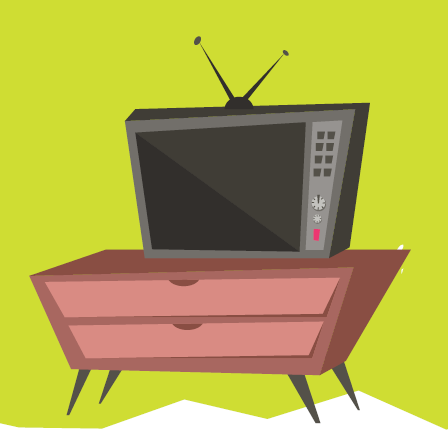TV
Televisions show sounds and pictures. They get data from cable, DVDs, or over-the-air signals.
They turn this data into sounds and images. People watch news and shows on them.
You probably call them TVs.
John Baird made the first TV in 1925. It wasn’t in colour. It could only show 30 lines.
This was just enough room for a face. It didn't work well, but it was a start.
The first TV station was set up in 1928. It was set up in New York. Few people had TVs.
The broadcasts were not meant to be watched. They showed a Felix the Cat doll for two hours a day.
The doll spun around on a record player. They were experimenting. It took many years to get it right.
By the end of the 1930s, TVs were working well. America got its first taste at the 1939 World's Fair.
This was one of the biggest events ever. There were 200 small, black and white TVs set up around the fair.
The U.S. President gave a speech over the TV. The TVs were only five inches big but the people loved it.
People wanted TVs, but World War II was going on during this time.
Factories were busy making guns and bombs. When the war was over, TV spread across the USA.
By 1948 there were 4 big TV stations in America. They aired shows from 8am to 11pm each night.
Some of the time, nothing was shown at all. TV was not "always on" like it is now.
Colour TVs came out in 1953. They cost too much money for most.
Also, most shows were still aired in black and white. By 1965, colour TVs became cheaper.
TV stations started airing shows in colour.
Now most TVs are HD. This means that they have very clear pictures.
TVs have come a long way since Baird's old set. HD TVs have 1080 lines.
There are state of the art sets called 4K TVs. These TVs have 3,840 lines.
Some people watch TV in 3D. I wonder what they will come up with next.

